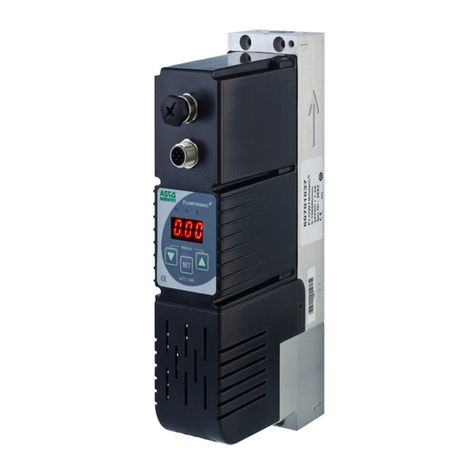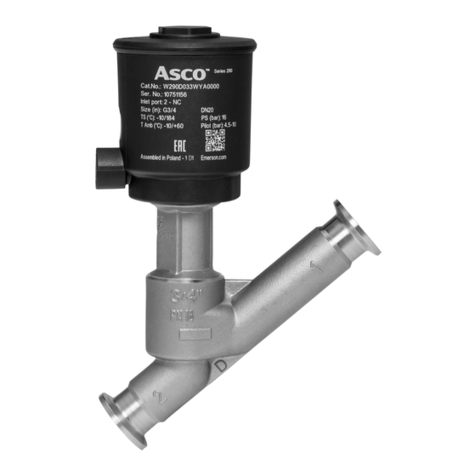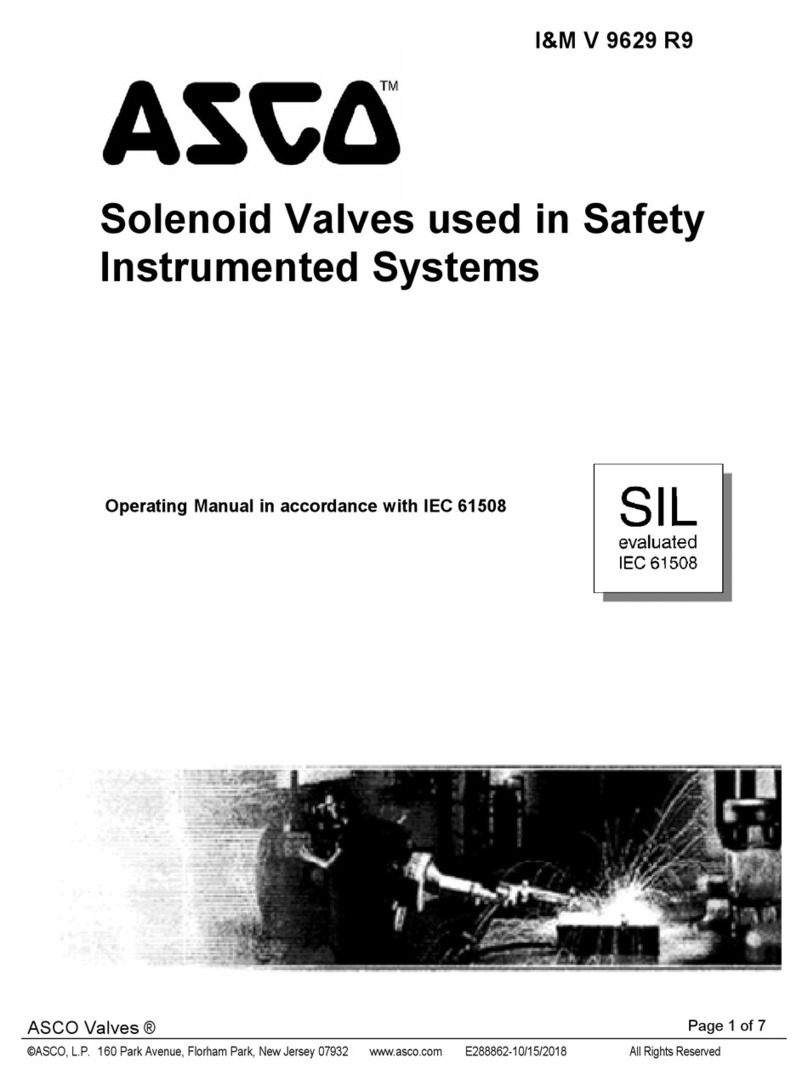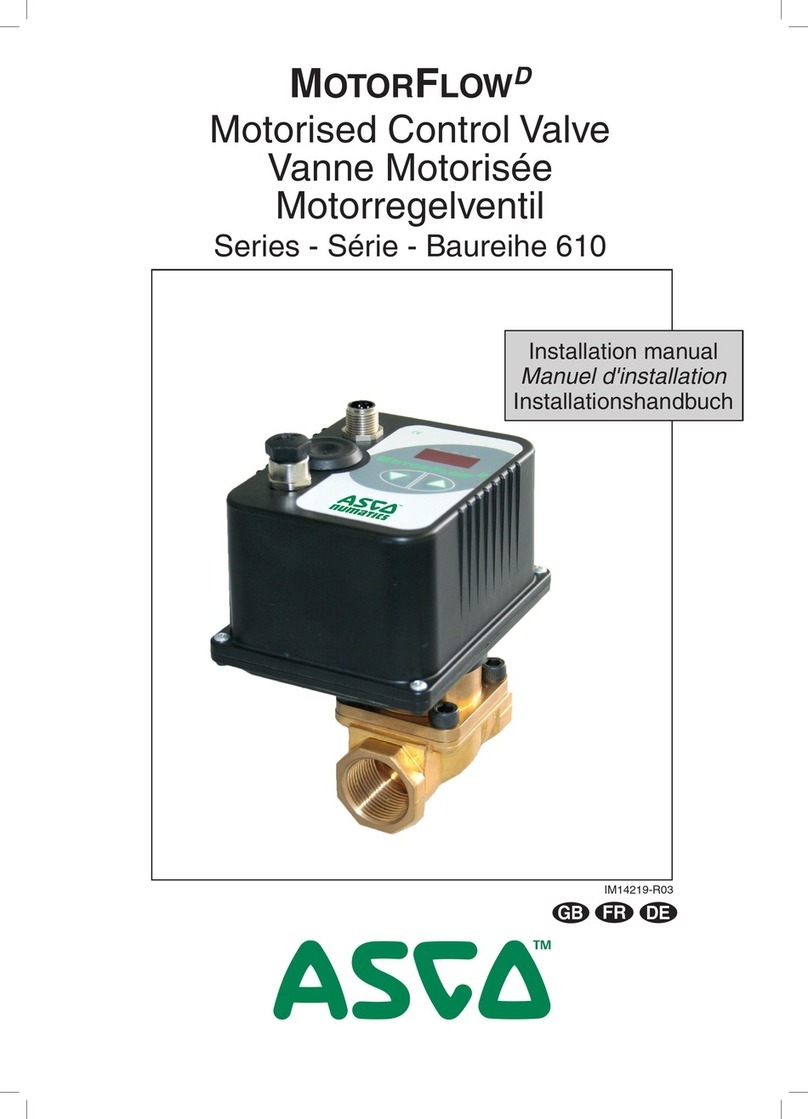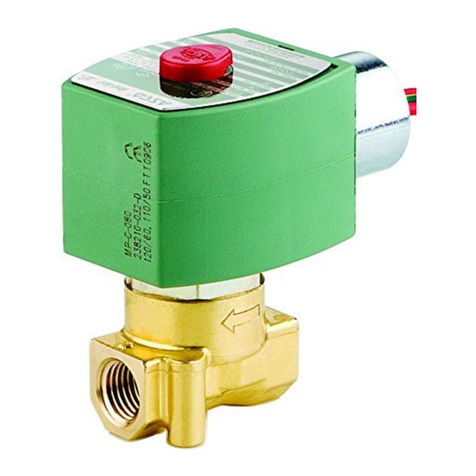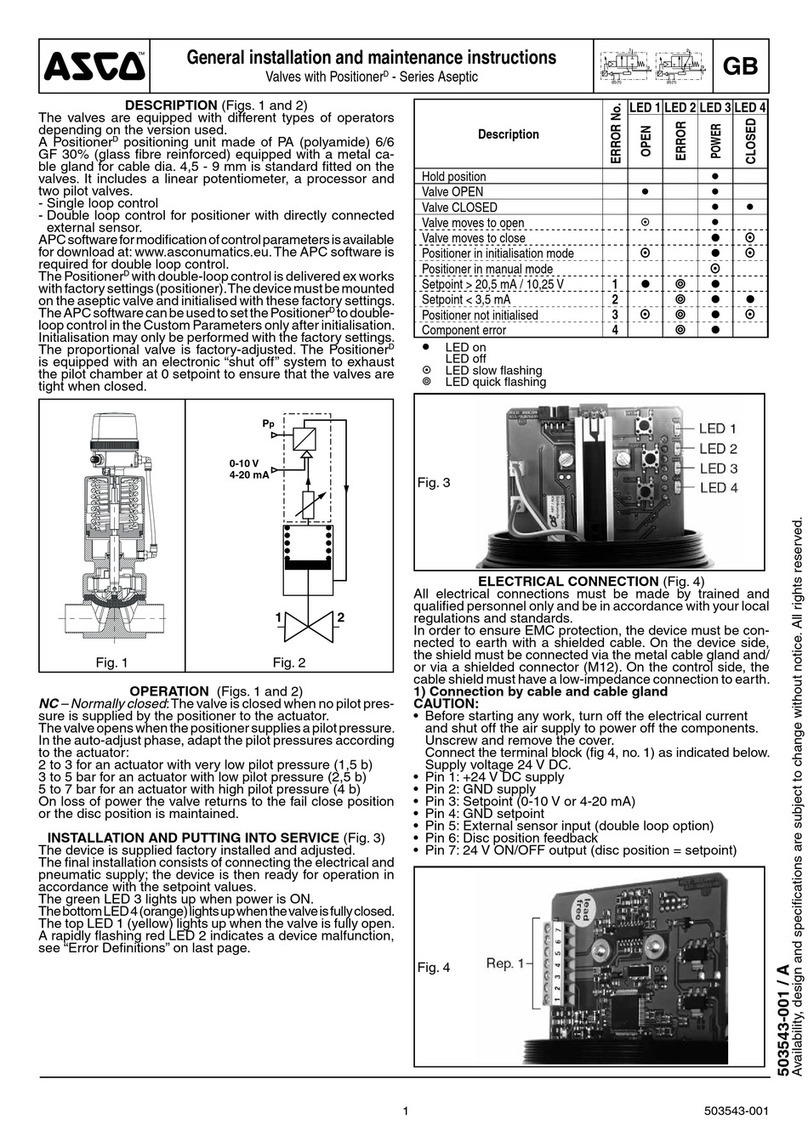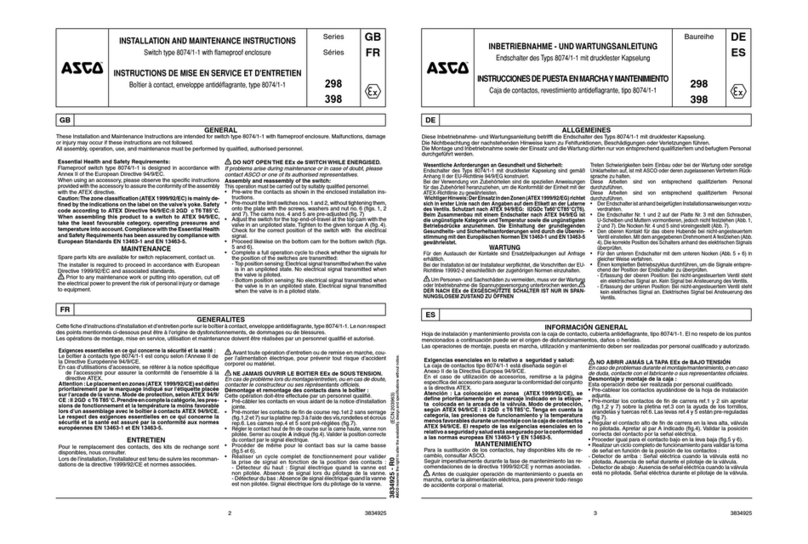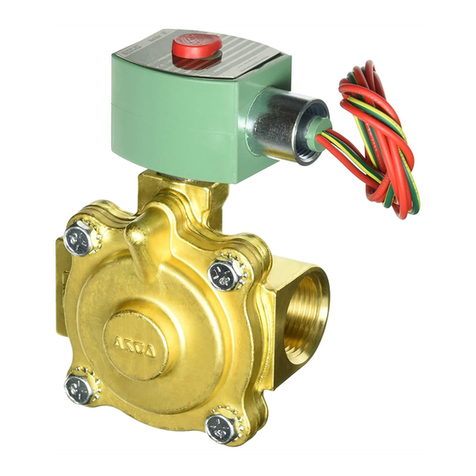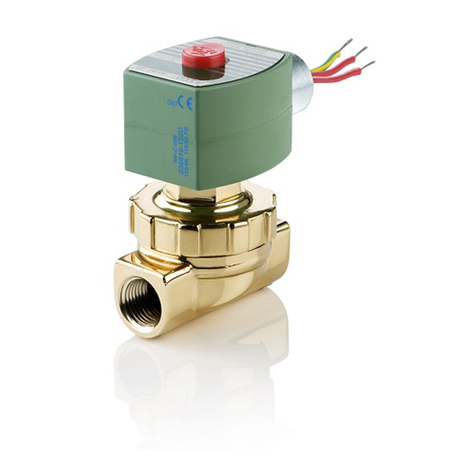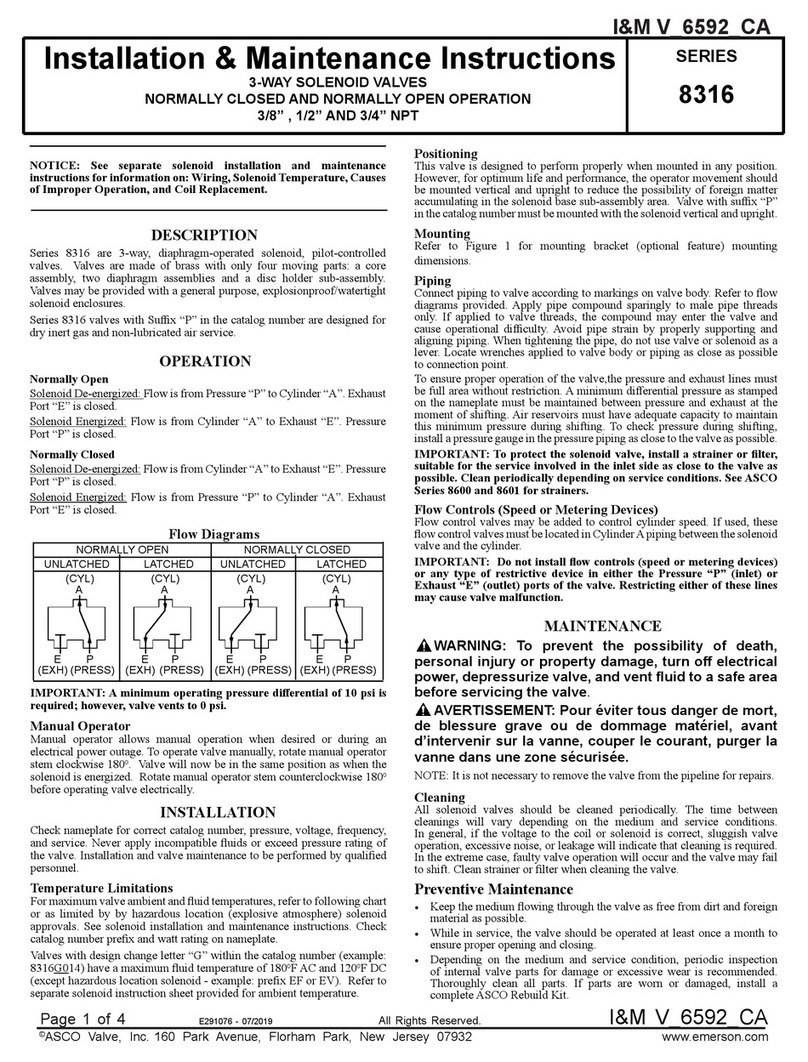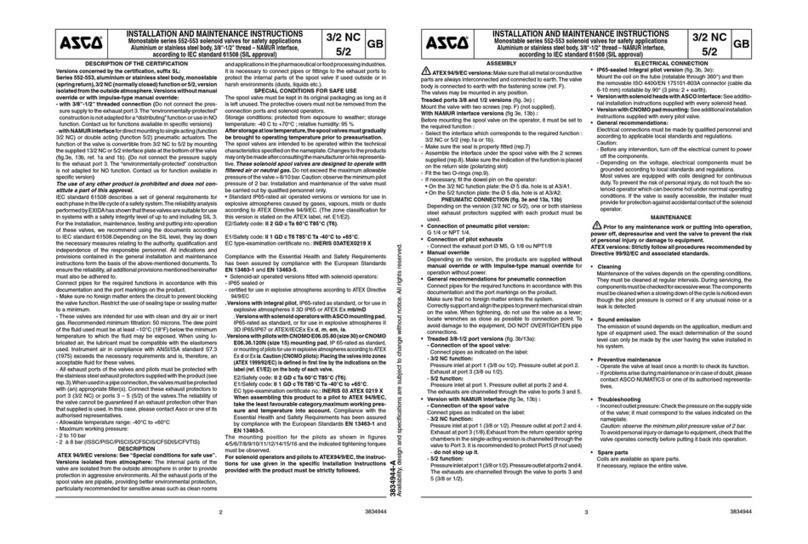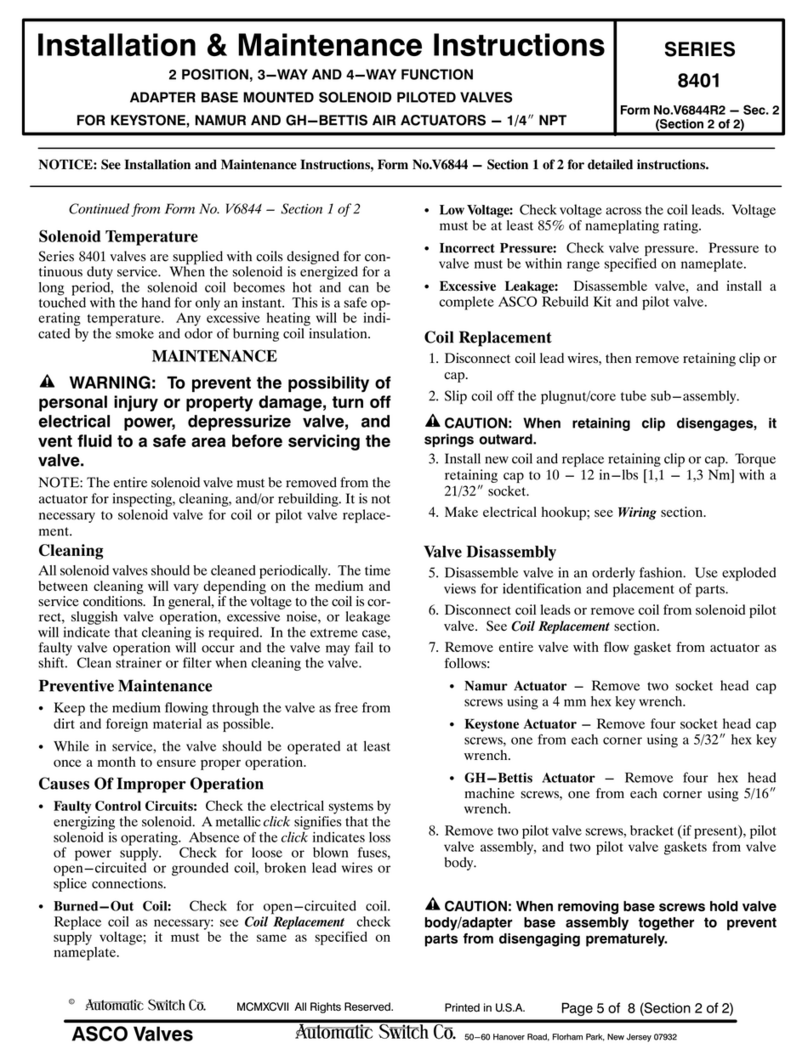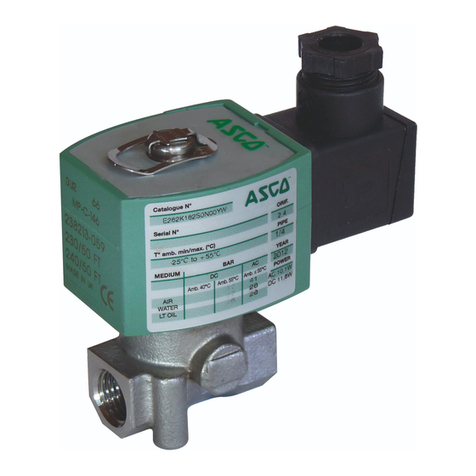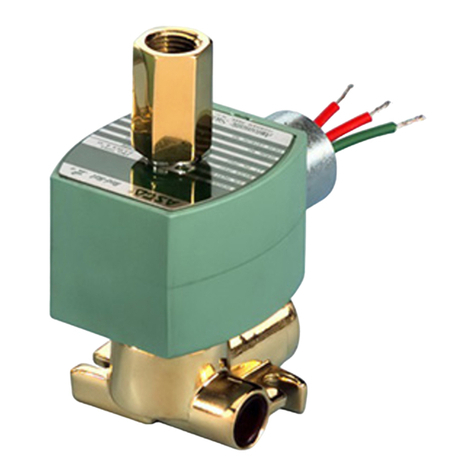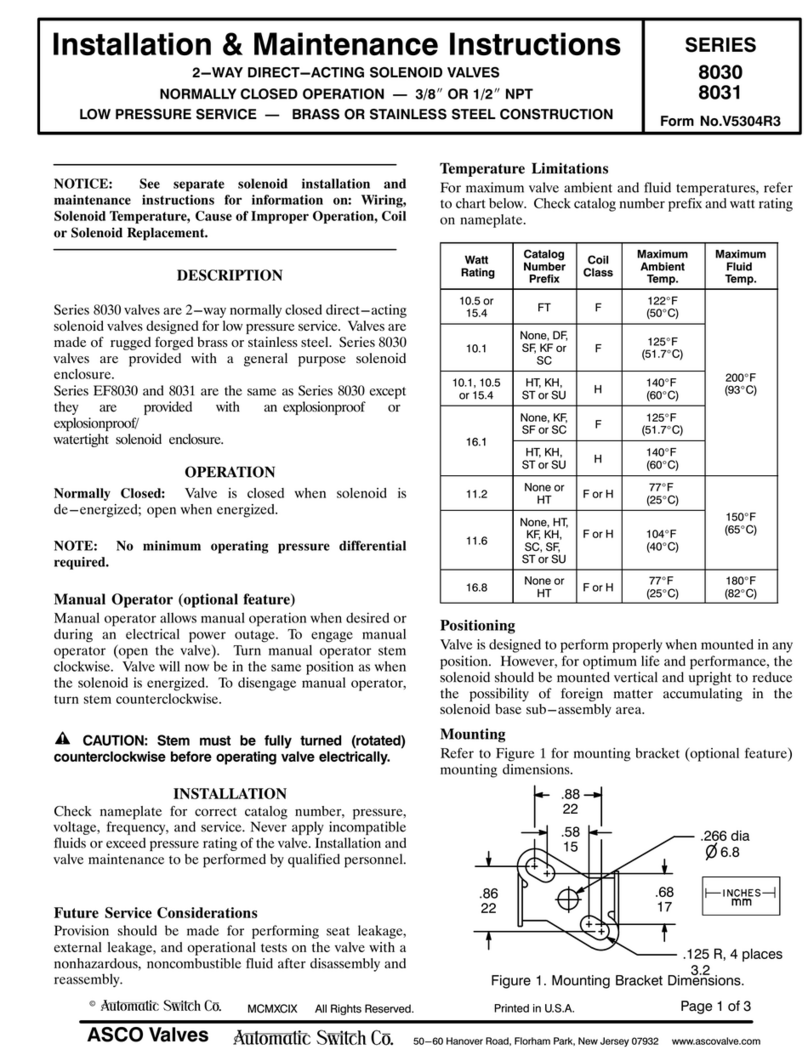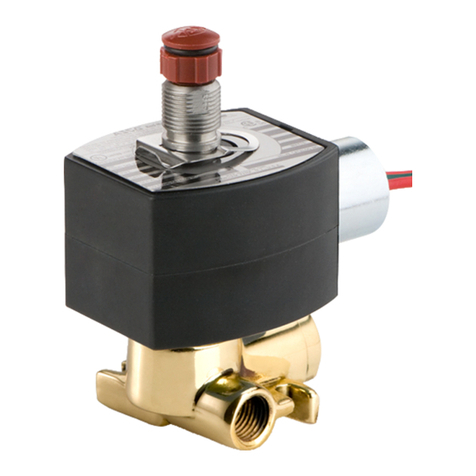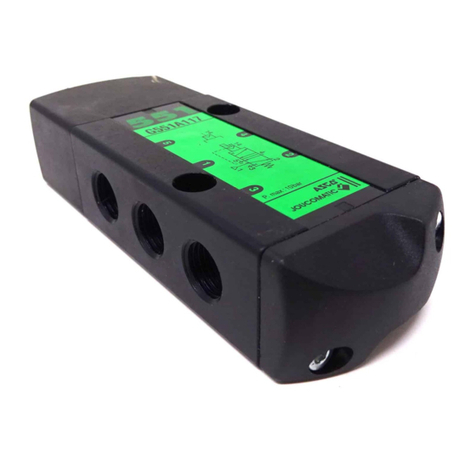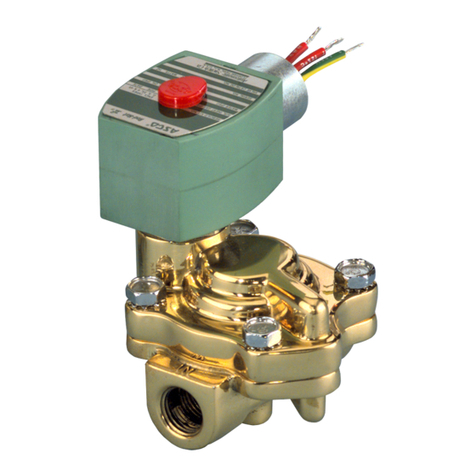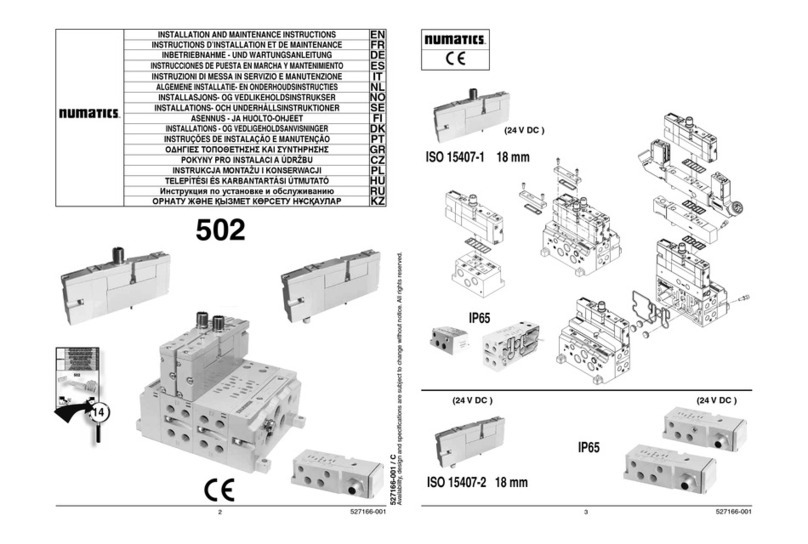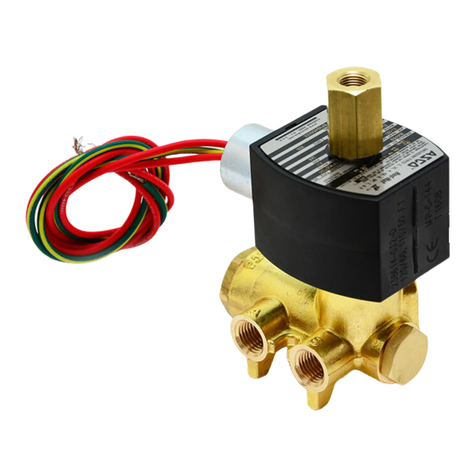
50 Hanover Road, Florham Park, New Jersey 0793 www.ascovalve.com
Page of 4 Form No.V6319R3
Positioning
This valve is designed to perform properly when mounted in
any position. However, for optimum life and performance, the
solenoid should be mounted vertically and upright to reduce
the possibility of foreign matter accumulating in the solenoid
base sub-assembly area.
Mounting
For body boss mounting dimensions, see Figure 1. below.
.94
[ 4]
.56
[14]
. 50- 0 UNC- B
. 5 [6] deep
mounting holes
Figure 1. Mounting dimensions
Piping
Connect piping to valve according to markings on valve body.
Apply pipe compound sparingly to male pipe threads only. If
applied to valve threads, the compound may enter the valve and
cause operational difficulty. Avoid pipe strain by properly
supporting and aligning piping. When tightening the pipe, do
not use valve or solenoid as a lever. Locate wrenches applied
to valve body or piping as close as possible to connection point.
CAUTION: To protect the solenoid valve install a
strainer or filter suitable for the service involved in the
inlet side as close to the valve as possible. Clean
periodically depending on service conditions. See
ASCO Series 8600, 8601 and 8602 for strainers.
M INTEN NCE
WARNING: To prevent the possibility of
death, serious injury or property damage, turn off
electrical power, depressurize valve, and vent
fluid to a safe area before servicing the valve.
Note: For inspecting, cleaning or rebuilding, remove piping
from Cylinder Ports A and B.
Cleaning
All solenoid valves should be cleaned periodically. The time
between cleaning will vary depending on the medium and
service conditions. In general, if the voltage to the coil is
correct, sluggish valve operation, e cessive noise or leakage will
indicate that cleaning is required. In the e treme case, faulty
valve operation will occur and the valve may fail to shift. Clean
strainer or filter when cleaning the valve.
Preventive Maintenance
SKeep the medium flowing through the valve as free from dirt
and foreign material as possible.
SWhile in service, the valve should be operated at least once
a month to insure proper shifting.
SDepending on the medium and service conditions, periodic
inspection of internal valve parts for damage or e cessive
wear is recommended. Thoroughly clean all parts. If parts
are worn or damaged, install a complete ASCO Rebuild Kit.
Causes of Improper Operation
SIncorrect Pressure: Check valve pressure. Pressure to valve
must be within range specified on nameplate.
SExcessive Leakage: Disassemble valve and clean all parts. If
parts are worn or damaged, install a complete ASCO
Rebuild Kit.
Valve Disassembly (Refer to Figure 4)
1. Remove piping from Cylinders A and B and disassemble
valve in an orderly fashion. Use e ploded views provided
for identification and placement of parts.
2. Remove solenoid enclosure. See separate instructions.
3. Unscrew solenoid base sub-assembly and remove core
spring guide and core spring.
4. Remove end cap screws (4), end cap and end cap gasket
from valve body.
5. Pull sleeve/disc/spring assembly containing disc
assemblies, disc spring and sleeve from valve body. Then
remove sleeve spring, core and bonnet gasket.
Note: On suffi P valve constructions, the core contains
three rider rings.
6. If cleaning is all that is required, do not remove body seat
(e haust), body seat gasket, end cap seat (cylinder), end
cap seat gasket, or orifice gaskets. Remove these only if
replacement seats and gaskets are available.
7. To remove body seat (e haust) and seat gasket, insert an
appropriate tool or a heavy gauge wire with a bent hook
on the end through the center hole in the seat. Pull to
dislodge seat. If seat will not dislodge easily, remove
piping from e haust port and push seat out with a thin rod
through the e haust port.
To remove end cap seat (cylinder) and gaskets, push seat
from end cap, using thin blunt rod inserted through hole
between Cylinder Port A and Cylinder Port B. When the
end cap contains metering devices, apply compressed air
through either pipe connection or the small vent hole in
the end cap to force out the end cap seat with the gasket.
If this fails, use the appropriate tool or bent wire described
above to dislodge the end cap seat with the gasket.
8. All parts are now accessible for cleaning or replacement.
If parts are worn or damaged, install a complete ASCO
Rebuild Kit.
Valve Reassembly
1. Lubricate all gaskets with DOW CORNINGr 111
Compound lubricant or an equivalent high-grade
silicone grease. Lubricate seating surface of end cap seat,
body seat and disc assemblies (including u-cups) with
Dow Corning Corporation's MOLYKOTEr M-77 Paste
lubricant supplied in ASCO Rebuild Kit. Note: On suffi
P valve constructions, lubricate core spring with lubricant
supplied.
2. Replace body seat gasket on body seat and install seat with
gasket side first into valve body.
3. Preassemble disc assembly on disc spring and install into
sleeve. Install remaining disc assembly from the opposite
end. The disc assemblies will snap onto the disc spring if
pushed evenly and twisted slightly.

